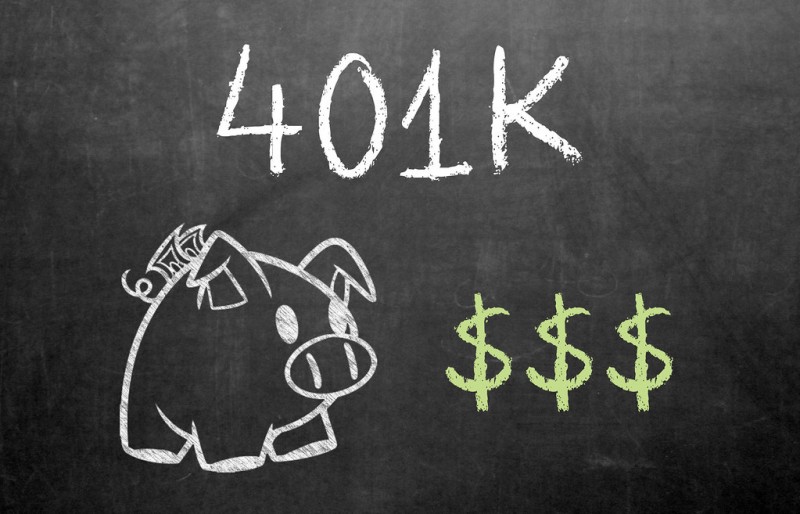
Retirement planning is a crucial aspect of securing your financial future. A 401(k) is one of the most popular retirement savings vehicles in the United States. It offers numerous advantages that can help individuals build a substantial nest egg for their post-work life. In this article, we will delve into the details of what a 401(k) is and how it functions as an essential tool for retirement savings.
1. Introduction
Definition of a 401(k)
A 401(k) is a retirement savings plan sponsored by employers for their employees. It allows workers to contribute a portion of their pre-tax income into a dedicated investment account. The contributions grow tax-deferred until retirement, providing a tax-efficient way to build wealth over time.
Importance of Retirement Savings
As individuals approach retirement age, they need a reliable source of income to maintain their standard of living. Social Security alone may not be sufficient, making personal retirement savings imperative. A well-funded 401(k) can play a vital role in ensuring a financially secure retirement.
2. How a 401(k) Works
Employee-Sponsored Retirement Plan
A 401(k) is typically offered as part of an employer-sponsored retirement benefits package. Employees can voluntarily enroll in the plan and choose to contribute a percentage of their salary to the account. Many employers also provide a matching contribution, which effectively adds free money to the employee's retirement savings.
Tax Benefits and Contributions
One of the main advantages of a 401(k) is its tax benefits. The contributions made by employees are deducted from their taxable income, reducing the amount of income tax they owe for the year. This tax deferral allows the contributions to grow faster, as the investment returns are not eroded by annual taxes.
Employer Matching Contributions
Employer matching contributions are a valuable incentive for employees to participate in their company's 401(k) plan actively. Employers may match a percentage of the employee's contributions, up to a certain limit. This matching contribution is essentially "free money" added to the employee's retirement fund.
3. Types of 401(k) Plans
Traditional 401(k)
The traditional 401(k) allows employees to contribute a portion of their pre-tax income into the retirement account. The contributions and any investment gains are taxed upon withdrawal during retirement. This can be advantageous if the employee expects to be in a lower tax bracket during retirement.
Roth 401(k)
Unlike the traditional 401(k), the Roth 401(k) allows employees to contribute after-tax income to the account. The contributions and earnings grow tax-free, and withdrawals in retirement are also tax-free. This can be beneficial for individuals who anticipate being in a higher tax bracket during retirement.
Safe Harbor 401(k)
The Safe Harbor 401(k) is designed to simplify retirement planning for employers. It requires employers to make mandatory contributions on behalf of their employees, and in return, the plan is exempt from certain annual compliance tests.
4. Setting Up a 401(k) Account
Eligibility and Enrollment
Eligibility for a 401(k) varies from company to company, and some employers may require employees to work for a certain period before becoming eligible. Once eligible, employees can enroll in the plan during specific enrollment periods.
Investment Options
401(k) plans usually offer a range of investment options, such as mutual funds, index funds, and target-date funds. Employees can choose the investment vehicles that align with their risk tolerance and retirement goals.
Contribution Limits
The IRS sets annual contribution limits for 401(k) accounts. As of 2023, the maximum contribution limit is $19,500 for individuals under 50 and $26,000 for individuals aged 50 and above, including catch-up contributions.
5. Advantages of a 401(k)
Tax Advantages
The tax-deferred growth of a 401(k) allows contributions and earnings to compound over time, maximizing the account's growth potential.
Employer Contributions
Employer matching contributions are essentially "free money" that boosts the employee's retirement savings without any additional effort.
Automatic Payroll Deductions
401(k) contributions are often deducted directly from the employee's paycheck, making it a convenient and consistent way to save for retirement.
6. Managing and Monitoring Your 401(k)
Diversification
Diversifying investments within a 401(k) can help mitigate risk and optimize returns.
Rebalancing
Periodically rebalancing the 401(k) portfolio ensures that the asset allocation remains aligned with the individual's risk tolerance and goals.
Reviewing Performance
Regularly reviewing the 401(k) account's performance allows individuals to make informed decisions about their investment strategy.
7. Withdrawals and Penalties
Age Requirements
Individuals can start withdrawing from their 401(k) penalty-free after reaching the age of 59½.
Early Withdrawals and Penalties
Withdrawing funds from a 401(k) before the age of 59½ typically incurs a penalty, in addition to income tax on the amount withdrawn.
Required Minimum Distributions (RMDs)
Once an individual reaches the age of 72, they must begin taking required minimum distributions from their 401(k) to avoid tax penalties.
8. Rolling Over a 401(k)
Rollover Options
When leaving an employer, individuals can choose to roll over their 401(k) into an Individual Retirement Account (IRA) or their new employer's 401(k) plan.
Benefits of Rollovers
Rollovers offer more investment options and potentially lower fees compared to employer-sponsored plans.
Process and Considerations
It is essential to follow the correct process and consider potential tax implications when performing a 401(k) rollover.
401(k) is a powerful tool for retirement savings, providing tax advantages, employer contributions, and an array of investment options. To make the most of a 401(k), individuals should start early, contribute consistently, and monitor their investment portfolio regularly. Remember, careful planning and informed decision-making will pave the way for a financially secure retirement.
Tubeless Tires for a Hassle-free Journey with Honda Shine 100
August Bank Holidays: Banking Schedules for August 2023
Honda Shine 100: Where Performance Meets Economy